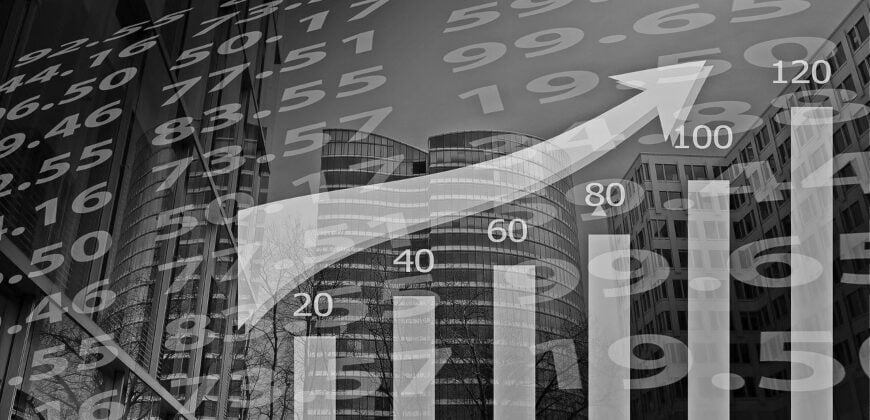The domestic economy is already feeling the effects of rising inflation to the tune of 7.5%, and now with war in the Ukraine we are seeing the lifting of prices of basic commodities like wheat, corn and gold. As such, the commodity markets are hot and expected to get hotter, with no supply chain relief in sight, nor a belief that the war in Ukraine will end anytime soon. According to the Wall Street Journal, wheat has surge to its highest level since 2008. Corn prices have jumped around 25% so far this year, earlier this week touching their highest levels since March 2013 before paring gains. Aluminum and nickel have jumped to their highest levels in over a decade. Just as we’ve mentioned with the energy sector, investments can be made in commodities through ETFs that can help you diversify against inflation and protect you from the drums of war.

The bellwether commodity index, the S&P GSCI index, has added about 30% so far this year, while the broad-based S&P 500 has retreated 8.5%. The Bloomberg Commodity Index has gained around 25% during that period. Another reason commodity prices are higher is because they are benefiting from something known as backwardation in the futures markets. Remember, commodities trade on futures exchanges like the Chicago Board of Trade and the London Metal Exchange, so fund managers are actually using the futures markets to create their ETF or fund portfolios. Backwardation is when the front month futures are priced higher than successive months, benefiting those who own them and roll them into further out contracts along the futures curve calendar. This is likely to continue as volatility remains in the commodities markets for reasons we have mentioned. There are also commodity equity ETFs that don’t use futures and invest in companies that either produce, transport or store commodities. This also provides a way to invest in commodities indirectly. The risks associated with physical and futures commodity ETFs can be avoided by investing in an equity fund. Also, equity fund expense ratios tend to be less costly. One disadvantage to equity ETFs is that the investor gets removed from the commodity by one layer. If you want to get exposure to the overall commodity markets that track the benchmarks mentioned and returned 30% year to date take a look at the following.

IShares S&P GSCI Commodity Indexed Trust (GSG)
GSG is a commodity pool tracking a version of the S&P GSCI, giving it fairly neutral exposure to the broad commodities market. It’s largest component comprising over half of the fund is in the energy sector, with an approximately equal distribution in the remainder of agriculture, metals, and livestock. GSG invests solely in front month futures contracts, thus giving it the advantage of backwardation that we previously mentioned.
We gave you the top performing energy ETFs in a recent article, and now it’s time to really blow you away with large returns from the top commodity funds.
Breakwave Dry Bulk Shipping (BDRY)
- Performance Over One-Year: 136.6%
- Expense Ratio: 3.32%
- Assets Under Management: $65.0 million
This is a very small fund with extremely large one year returns. To get technical, BDRY tracks an index of long-only exposure to the nearest calendar quarter of dry bulk freight futures contracts on specified indexes, thus giving it backwardation benefits. As the name states, this is a play on freight and bulk shipping. BDRY is structured as a commodity pool, a private investment structure that combines investor contributions to trade the futures and commodities markets, so expect a K-1 at tax time and long-term holders will be taxed on any gains even without selling shares.
iPath Series B Carbon ETN (GRN)
- Performance Over One-Year: 127.5%
- Expense Ratio: .75%
- Assets Under Management: $166.6 million
Whether you like it or not this has been a very profitable play on climate and the environment. If you can’t beat um, join um to the tune of 127.5% returns last year. GRN is an exchange-traded note that tracks the Barclays Global Carbon II TR USD Index. The index provides exposure to the price of carbon as measured by the return of futures contracts on carbon emissions credits from the European Union.
- Performance Over One-Year: 50.44%
- Expense Ratio: 2.19%
- Assets Under Management: $162.52million
Teucrium has a family of funds that invest in other crops if you are adverse to corn, such as wheat, soybeans, sugar and a combined fund. According to the fund, their mission is to make it easier for investors to gain price exposure to alternative investments. They believe investors can build more resilient portfolios by diversifying across capital markets and allocating to a variety of different asset classes. CORN, like each of the other funds, tracks an index of corn futures contracts. It reflects the performance of corn by holding Chicago Board of Trade corn futures contracts with three different expiration dates. Think about putting part of your portfolio here as these commodities are a classic hedge against inflation. Additionally, with war going on and food either in short supply or such supply having difficulty moving, an investment in this asset class could prove very profitable.











